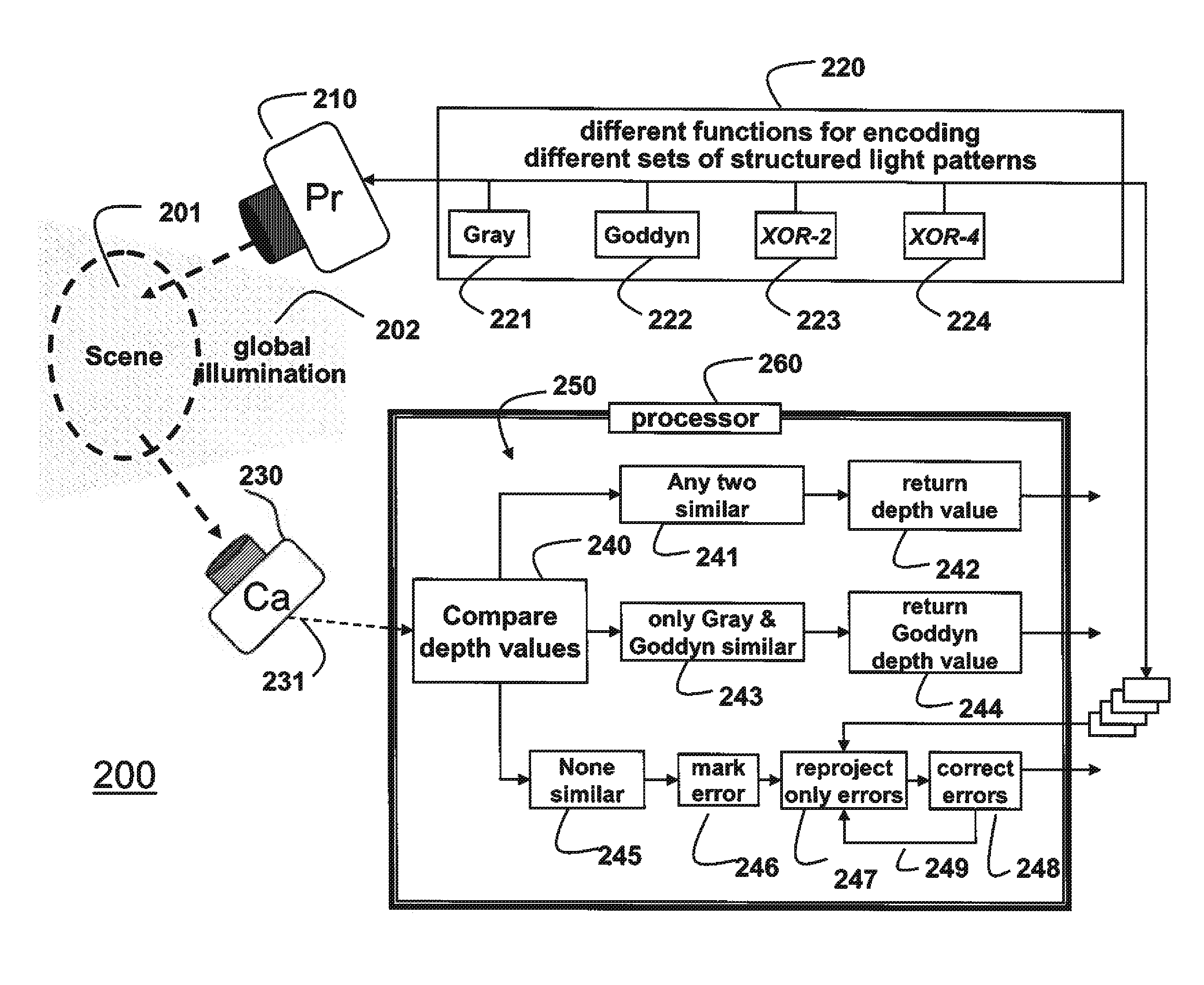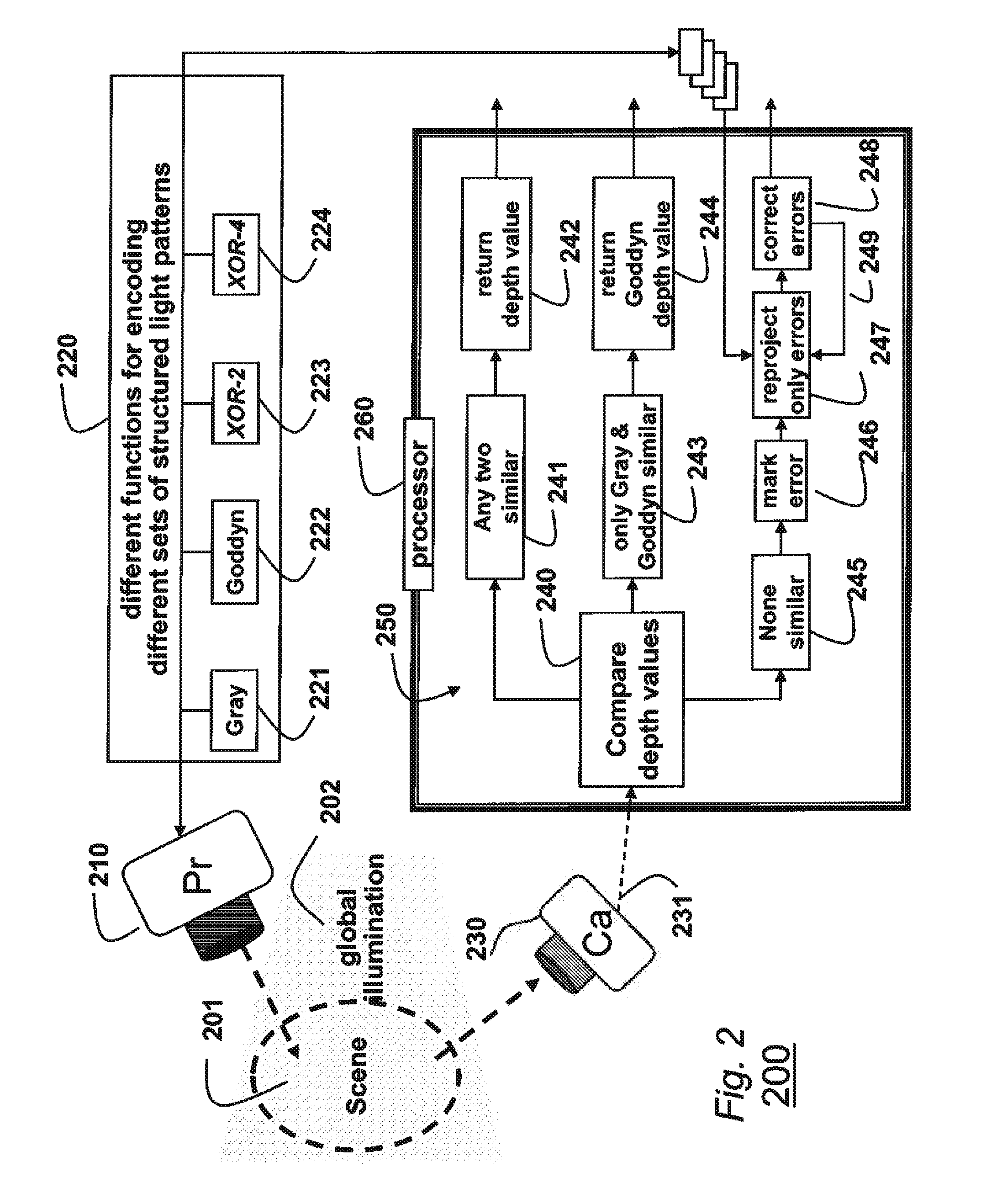Structured light for 3D shape reconstruction subject to global illumination
a technology of structured light and 3d shape reconstruction, applied in the direction of image analysis, image enhancement, instruments, etc., can solve problems such as degrading the performance of such methods
- Summary
- Abstract
- Description
- Claims
- Application Information
AI Technical Summary
Benefits of technology
Problems solved by technology
Method used
Image
Examples
Embodiment Construction
[0019]Error Analysis for Structured-Light Under Global Light Transport
[0020]The basic principle behind shape from structured light methods is triangulation. Each row and column of pixels in a projector is encoded with unique spatial or temporal codes to form structured light patterns. The projector illuminates the scene with the light pattern, while a camera acquires a sequence of images, one for each pattern.
[0021]For each pixel in the camera sensor, the corresponding row and column of the projector are determined by decoding measured intensity values. Then, depths are determined by triangulating camera rays and a projector plane. For correct decoding, it is assumed that each camera pixel receives irradiance from a single projector pixel.
[0022]However, in most real world scenes, the camera pixel can receive irradiance from multiple projector pixels due to global light transport effects, camera / projector defocus and optics artifacts, spatial misalignment of projector-camera pixels, ...
PUM
 Login to View More
Login to View More Abstract
Description
Claims
Application Information
 Login to View More
Login to View More - R&D
- Intellectual Property
- Life Sciences
- Materials
- Tech Scout
- Unparalleled Data Quality
- Higher Quality Content
- 60% Fewer Hallucinations
Browse by: Latest US Patents, China's latest patents, Technical Efficacy Thesaurus, Application Domain, Technology Topic, Popular Technical Reports.
© 2025 PatSnap. All rights reserved.Legal|Privacy policy|Modern Slavery Act Transparency Statement|Sitemap|About US| Contact US: help@patsnap.com



